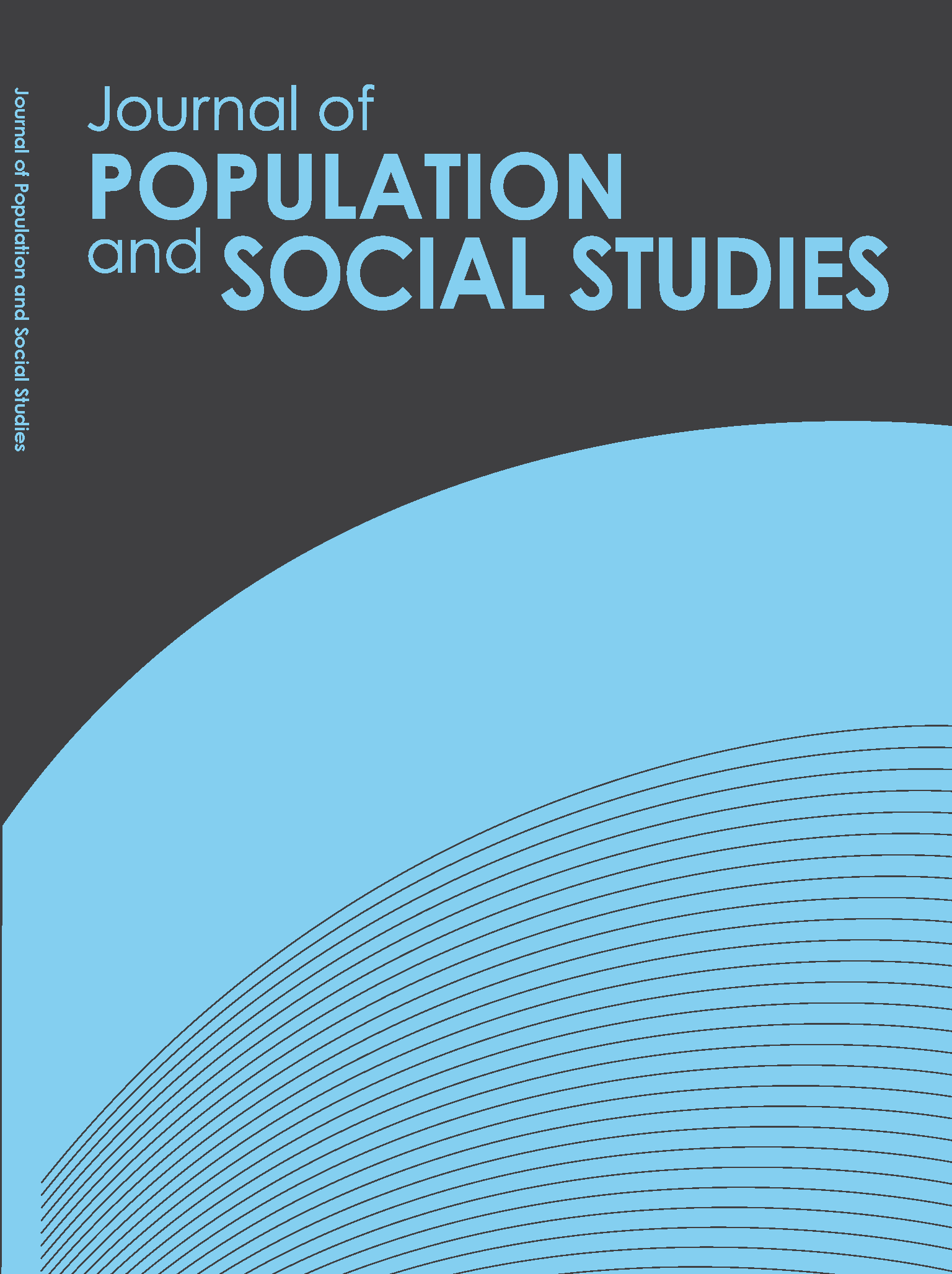Fertility in Sixty-Four Developing and Developed Countries: The Role of Financial Development
Main Article Content
Abstract
This study examined the relationship between financial development and fertility in 64 countries between 2001 and 2015. This comprehensive analysis allowed inputs for development planning. The dynamic panel GMM analysis was used to develop models for fertility-financial development analysis, controlling for other variables, such as per capita income, infant mortality rate, female education, and urbanization. Results showed that financial development has a non-linear inverted U-shaped relationship with total fertility rate in developing countries, but a non-linear U-shaped association in developed countries. Based on the findings, this study offers some imperative policy recommendations.
Article Details
References
• Agyei-Mensah, S., & Owoo, N.S. (2015). Explaining regional fertility variations in Ghana. Journal of Population Research, 32(3-4), 157–172.
• Arellano, M., & Bond, S. (1991). Some tests of specification for panel data: Monte Carlo evidence and an application to employment equations. The Review of Economic Studies, 58(2), 277-297.
• Basso, A., Bodenhorn, H., & Cuberes, D. (2014). Fertility and financial development: Evidence from U.S. counties in the 19th century. Retrieved from https://www.nber.org/papers/w20491
• Becker, G.S. (1960). An economic analysis of fertility. In N. B. o. E. Research (Eds.), Demographic and economic change in developed countries (pp. 209-231). Princeton, New Jersey, USA: Princeton University Press.
• Blundell, R., & Bond, S. (1998). Initial conditions and moment restrictions in dynamic panel data models. Journal of Econometrics, 87(1), 115-143.
• Boldrin, M., De Nardi, M., & Jones, L. (2005). Fertility and social security. Journal of Demographic Economics, 81(3), 261-299.
• Bowsher, C. (2002). On testing overidentifying restrictions in dynamic panel data models. Economics Letters, 77(2), 211-220.
• Caldwell, B.K., & Caldwell, J.C. (2003). Below-replacement fertility: Determinants and prospects in South Asia. Journal of Population Research, 20(1), 19-34.
• Caldwell, J.C. (1976). Toward a restatement of demographic transition theory. Population and Development Review, 2(3/4), 321-366.
• Cigno, A. (1993). Intergenerational transfers without altruism: Family, market and state. European Journal of Political Economy, 9, 505–518.
• Cigno, A., & Rosati, F.C. (1992). The effects of financial markets and social security on saving and fertility behaviour in Italy. Journal of Population Economics, 5(4), 319–341.
• Cigno, A., & Rosati, F.C. (1996). Jointly determined saving and fertility behaviour: Theory and estimates for Germany, Italy, UK, and USA. European Economic Review, 40(8), 1561–1589.
• Dahan, M., & Tsiddon, D. (1998). Demographic transition, income distribution and economic growth. Journal of Economic Growth, 3(1), 29–52.
• Fenge, R., & Scheubel, B. (2017). Pensions and fertility: Back to the roots. Journal of Population Economics, 30(1), 93-139.
• Filoso, V., & Papagni, E. (2015). Fertility choice and financial development. European Journal of Political Economy, 37, 160-177.
• Habibullah, M.S., Farzaneh, N., & Din, B.H. (2016). Declining fertility and financial development in high-income and low-income countries. International Journal of Applied Business and Economic Research, 14(1), 277-290.
• Ibrahim, M.H. (2019). Oil and macro-financial linkages: Evidence from the GCC countries. The Quarterly Review of Economics and Finance, 72, 1-13.
• Idris, A.R., Habibullah, M.S., & Din, B.H. (2018). Does financial development contribute to fertility decline in Malaysia? An empirical investigation. Journal Ekonomi Malaysia, 52(1), 209-221.
• International Monetary Fund (IMF). (2017). World economic outlook, April 2017: Gaining momentum? Retrieved from https://www.imf.org/~/media/Files/Publications/WEO/2017/April/pdf/tblpartb.ashx
• Keele, L., & Jelly, N.J. (2005). Dynamic models for dynamic theories: The ins and outs of lagged dependent variables. Political Analysis, 14(2), 186-205.
• Law, S.H., Kutan, A.M., & Naseem, N.A.M. (2018). The role of institutions in finance curse: Evidence from international data. Journal of Comparative Economics, 46(1), 174-191.
• Lehr, C.S. (1999). Banking on fewer children: Financial intermediation, fertility and economic development. Journal of Population Economics, 12, 567-590.
• Leibenstein, H. (1957). Economic backwardness and economic growth. New York, USA: John Wiley and Sons.
• Lim, Z.K., Lai, S.L., & Tang, T.C. (2019). Does financial openness tell much about fertility transitions? International Journal of Economics and Management, 13(1), 125-137.
• Maksymenko, S. (2009). Fertility, money holdings, and economic growth: Evidence from Ukraine. Comparative Economic Studies, 51, 75-99.
• Oikarinen, E., & Engblom, J. (2016). Differences in housing price dynamics across cities: A comparison of different panel model specifications. Urban Studies, 53(11), 2312-2329.
• Rammohan, A. (2001). Development of financial capital markets and the role of children as economic assets. Journal of International Development, 13(1), 45-58.
• Roodman, D. (2009). A note on the theme of too many instruments. Oxford Bulletin of Economics and Statistics, 71(1), 135-158.
• Steckel, R.H. (1992). The fertility transition in the United States: Tests of alternative hypotheses. In C. Goldin & H. Rockoff (Eds.), Strategic factors in nineteenth century American economic history: A volume to honor Robert W. Fogel (pp. 351–374). University of Chicago Press.
• Tang, C.F., & Tey, N.P. (2017). Low fertility in Malaysia: Can it be explained? Journal of Population Research, 34(2), 101–118.
• United Nations. (2017). World Population Prospects: The 2017 Revision. Population Division, Department of Economic and social Affairs, United Nations, New York.
• Windmeijer, F. (2005). A finite sample correction for the variance of linear efficient two-step GMM estimators. Journal of Econometrics, 126(1), 25-51.
• Zakaria, M., Fida, B.A., Janjua, S.Y., & Shahzad, S.J.H. (2016). Fertility and financial development in South Asia. Social Indicators Research, 133(2), 645-668.

